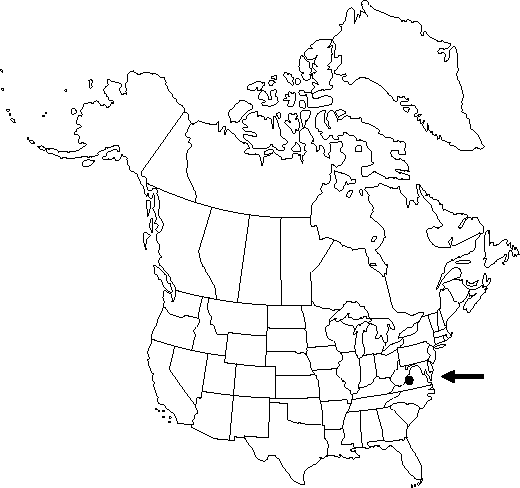Difference between revisions of "Clematis viticaulis"
Contr. U.S. Natl. Herb. 13: 364. 1911.
FNA>Volume Importer |
imported>Volume Importer |
||
| (7 intermediate revisions by 2 users not shown) | |||
| Line 24: | Line 24: | ||
}}<!-- | }}<!-- | ||
| − | --><span class="statement" id="st- | + | --><span class="statement" id="st-undefined" data-properties=""><b>Stems </b>erect, 2-5 dm, finely and densely hirtellous. <b>Leaves</b> simple. <b>Leaf</b> blade elliptic-lanceolate to narrowly ovate, unlobed, (2-)4-8 × 1.5-3.5(-4.5) cm, thin, not conspicuously reticulate; surfaces abaxially sparsely (rarely more densely) villous on veins, not glaucous. <b>Inflorescences</b> terminal, flowers solitary; bracts absent. <b>Flowers</b> urn-shaped; sepals pale purple, often suffused with green abaxially, lanceolate, 1.4-2.5 cm, margins not expanded, thin, not crispate, puberulent, tips obtuse to acute, spreading to recurved, abaxially nearly glabrous to minutely puberulent. <b>Achenes</b>: bodies short-pilose; beak coppery brown, 2-3.5(-4) cm, plumose. <b>2n</b> = 16.</span><!-- |
-->{{Treatment/Body | -->{{Treatment/Body | ||
| Line 32: | Line 32: | ||
|distribution=Va. | |distribution=Va. | ||
|discussion=<p>Of conservation concern.</p><!-- | |discussion=<p>Of conservation concern.</p><!-- | ||
| − | --><p>Clematis viticaulis is known only from shale barrens developed from the Upper Devonian Brallier Formation in Bath and Rockbridge counties of western Virginia.</p><!-- | + | --><p><i>Clematis viticaulis</i> is known only from shale barrens developed from the Upper Devonian Brallier Formation in Bath and Rockbridge counties of western Virginia.</p><!-- |
--><p>The coppery brown hairs on the mature beaks are useful for distinguishing this species (C. S. Keener 1967).</p> | --><p>The coppery brown hairs on the mature beaks are useful for distinguishing this species (C. S. Keener 1967).</p> | ||
|tables= | |tables= | ||
| Line 42: | Line 42: | ||
-->{{#Taxon: | -->{{#Taxon: | ||
name=Clematis viticaulis | name=Clematis viticaulis | ||
| − | |||
|authority=Steele | |authority=Steele | ||
|rank=species | |rank=species | ||
| Line 57: | Line 56: | ||
|publication year=1911 | |publication year=1911 | ||
|special status=Conservation concern;Endemic | |special status=Conservation concern;Endemic | ||
| − | |source xml=https:// | + | |source xml=https://bitbucket.org/aafc-mbb/fna-data-curation/src/2e0870ddd59836b60bcf96646a41e87ea5a5943a/coarse_grained_fna_xml/V3/V3_569.xml |
|genus=Clematis | |genus=Clematis | ||
|subgenus=Clematis subg. Viorna | |subgenus=Clematis subg. Viorna | ||
|species=Clematis viticaulis | |species=Clematis viticaulis | ||
| − | |||
| − | |||
| − | |||
| − | |||
| − | |||
| − | |||
| − | |||
| − | |||
| − | |||
| − | |||
| − | |||
| − | |||
| − | |||
| − | |||
| − | |||
| − | |||
| − | |||
| − | |||
| − | |||
| − | |||
| − | |||
| − | |||
| − | |||
| − | |||
| − | |||
| − | |||
| − | |||
| − | |||
| − | |||
| − | |||
| − | |||
}}<!-- | }}<!-- | ||
-->[[Category:Treatment]][[Category:Clematis subg. Viorna]] | -->[[Category:Treatment]][[Category:Clematis subg. Viorna]] | ||
Latest revision as of 22:49, 5 November 2020
Stems erect, 2-5 dm, finely and densely hirtellous. Leaves simple. Leaf blade elliptic-lanceolate to narrowly ovate, unlobed, (2-)4-8 × 1.5-3.5(-4.5) cm, thin, not conspicuously reticulate; surfaces abaxially sparsely (rarely more densely) villous on veins, not glaucous. Inflorescences terminal, flowers solitary; bracts absent. Flowers urn-shaped; sepals pale purple, often suffused with green abaxially, lanceolate, 1.4-2.5 cm, margins not expanded, thin, not crispate, puberulent, tips obtuse to acute, spreading to recurved, abaxially nearly glabrous to minutely puberulent. Achenes: bodies short-pilose; beak coppery brown, 2-3.5(-4) cm, plumose. 2n = 16.
Phenology: Flowering spring–early summer.
Habitat: Shale barrens
Elevation: 400-500 m
Discussion
Of conservation concern.
Clematis viticaulis is known only from shale barrens developed from the Upper Devonian Brallier Formation in Bath and Rockbridge counties of western Virginia.
The coppery brown hairs on the mature beaks are useful for distinguishing this species (C. S. Keener 1967).
Selected References
None.
